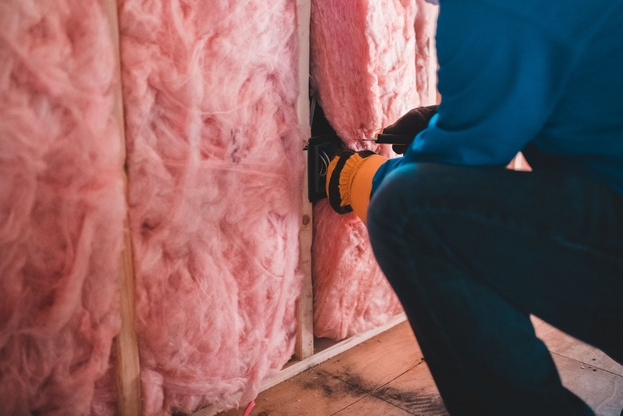
Removing old insulation is essential for any homeowner tackling home improvement projects or preparing for a new insulation installation. It is necessary to remove old insulation to maximize the effectiveness of the new insulation. This guide will provide an overview of the types of insulation, the removal process, and the disposal of old insulation.
Insulation serves many purposes in a home – it protects from cold air seeping through walls and ceilings, drafts in window sills, and helps regulate overall temperature. Over time old insulation can become less efficient or even damaged and needs to be replaced to maintain your home’s temperature. Depending on the type of insulation in your home, you will require different techniques and materials for removal.
Types of Insulation
Several types of insulation are made from various materials, including fibreglass, mineral wool, spray foam, and cellulose. Here’s an overview of each type:
Fibreglass: This type of insulation is made of tiny glass fibres that are spun together and are most commonly used in walls, ceilings, and attics. It provides moderate sound absorption and insulation but may need to be replaced more frequently due to its tendency to compress over time. Compared to other types, it is relatively cheap and easy to install.
Mineral Wool: This type of insulation is made from either rock or slag wool and is used mainly in walls and attics. Like fibreglass, it is relatively easy to install, provides moderate sound absorption, and can withstand higher temperatures.
Spray Foam: This type of insulation is liquid and expands when applied, providing air-sealing properties and insulation. It can be used on walls, ceilings, attics, and floors and offers excellent soundproofing and insulation.
Cellulose: This type of insulation is made from recycled paper products and provides good sound absorption and excellent insulation. It can also be used on walls, ceilings, attics, and floors but is more labour-intensive to install than the other types.
Removal Process
Before beginning any home improvements that require insulation removal, it is essential to research the procedure and safety precautions to ensure a safe and successful project.
The process of removing old insulation will depend on the type of insulation and the accessibility of the area in which it is located. It may be best to consult with an experienced professional like iFoam for advice on safely removing insulation from your home.
Tips on How to Safely Remove Old Insulation
- Wear protective gear such as gloves, goggles, and a face mask to protect your skin and eyes from any particles that may be airborne.
- Use a vacuum cleaner with a HEPA filter to suck up the old insulation from walls, floors, or attics.
- Make sure to remove any debris or dust caused by the removal process before
- Be aware of any potential dangers in old insulation, such as mould or asbestos, and take the necessary precautions.
- Know where electrical wiring and other hazards are located before attempting removal.
- If you need help with removing your insulation correctly, it is best to consult a licensed professional.
Steps on How to safely remove old insulation
1. Identify the type of insulation you are working with and research the safe removal process for that material.
2. Wear protective gear, such as gloves, goggles, and a face mask, to protect your skin and eyes from any particles that may be airborne.
3. Clear out the area to be worked on and make sure all of the debris is removed.
4. Vacuum any loose pieces of insulation with a vacuum cleaner with a HEPA filter to prevent particles from entering your home’s air supply.
5. Check electrical wiring and other potential hazards before beginning work.
6. Dispose of the insulation appropriately, such as double-bagging it and bringing it to a local hazardous waste facility.
7. Clean up any remaining debris and dust from the area before replacing it with new insulation.
Disposal of Old Insulation
Once the insulation has been removed, it must be disposed of adequately to protect the environment. It is essential to follow all local disposal guidelines for insulation removal to ensure proper handling and disposal of the material. Many local waste management companies can advise and assist in disposing of old insulation.
In some cases, you may be able to recycle the insulation by taking it to a specialized recycling facility. This will help reduce the amount of waste that goes into landfills and save you money.
To wrap things up
Removing old insulation can be a tricky and potentially dangerous task. Researching the process and safety precautions before beginning is essential, as wearing protective gear and taking all necessary steps to protect your home from potential hazards. Make sure to dispose of the insulation appropriately, such as double-bagging it and bringing it to a local hazardous waste facility. With the proper knowledge and precautions, you can ensure a safe and successful insulation removal process.




 POSTED BY
POSTED BY 

